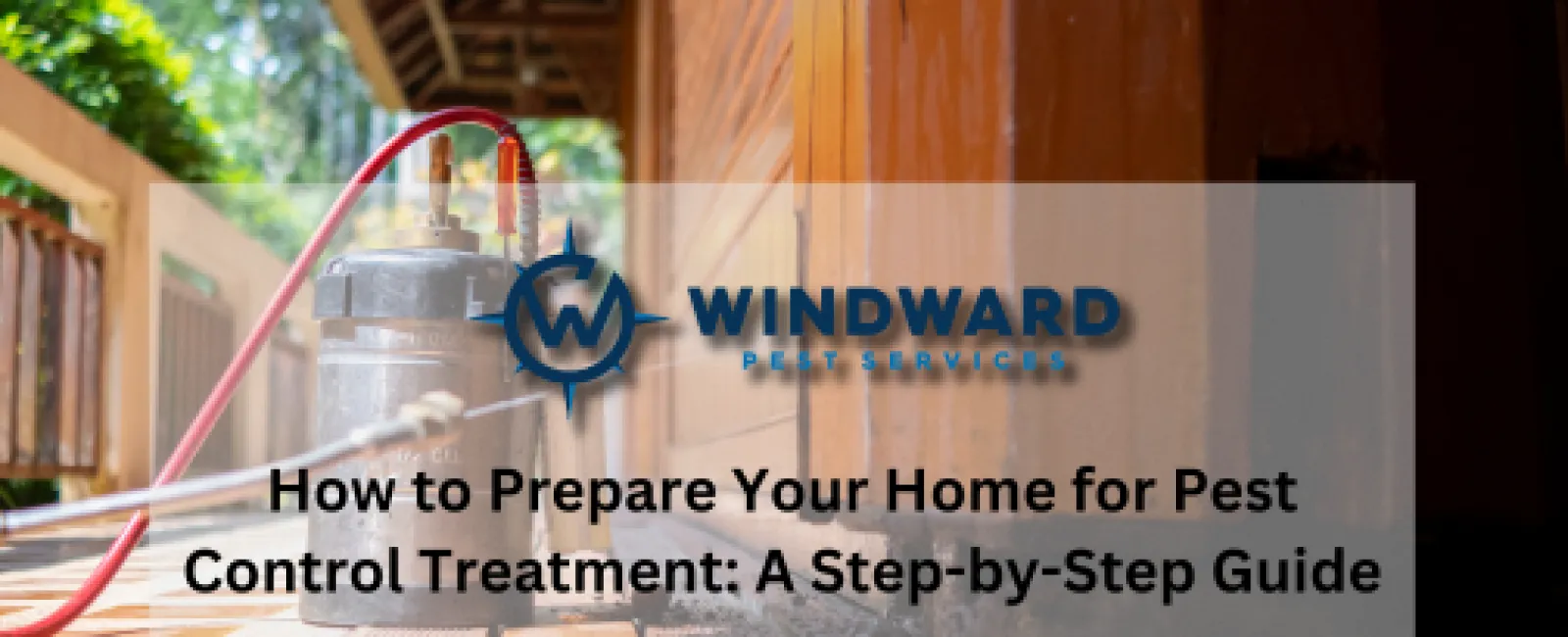Pest infestations can be a major source of stress for homeowners, but professional pest control treatments offer an effective solution to reclaim your home from unwanted intruders. Whether you're dealing with rodents, ants, termites, or other pests, proper preparation is key to ensuring the success of the treatment. By taking the time to prepare your home, you can help your pest control technician work more efficiently and achieve the best possible results.
In this comprehensive guide, we'll walk you through the steps to prepare your home for pest control treatment. From clearing clutter and securing pets to protecting food items and identifying problem areas, these steps will ensure a smooth and effective process. If you're in Atlanta and looking for reliable pest control services, Windward Pest Services is here to help. Our Atlanta pest control experts specialize in interior and exterior pest treatments, pest inspections, and quarterly services to keep your home pest-free year-round. Let's dive into the details and get your home ready for a professional pest control treatment.
Why Preparation Matters
Preparing your home for pest control treatment is not just about making the technician's job easier—it's about maximizing the effectiveness of the treatment. Pests often hide in hard-to-reach areas, and clutter or improperly stored items can create barriers that limit the technician's ability to target these spaces. Additionally, certain preparations, such as securing pets and removing food items, are essential for ensuring the safety of your family and pets during the treatment process.
By following this step-by-step guide, you'll not only help your pest control technician do their job more effectively but also contribute to the long-term success of the treatment. Whether you're scheduling a one-time service or signing up for quarterly services with Windward Pest Services, proper preparation is a crucial step in achieving a pest-free home.
Step 1: Identify Problem Areas
Before the pest control technician arrives, take some time to identify areas where pests are most active. Common problem areas include:
Kitchens and Pantries: Pests like ants, cockroaches, and rodents are often attracted to food sources.
Bathrooms: Moisture-loving pests such as silverfish and drain flies thrive in damp environments.
Basements and Crawl Spaces: These areas are prone to pests like termites, spiders, and rodents.
Attics: Rodents and insects often nest in attics, especially during colder months.
Make a note of these areas and share them with your technician during the pest inspection. This will help them focus their efforts on the most critical areas.
Step 2: Clear Clutter and Move Furniture
Pests love to hide in cluttered spaces, so clearing clutter is essential for an effective treatment. Here's what to do:
Declutter Rooms: Remove items from floors, countertops, and shelves, especially in problem areas like kitchens and basements.
Move Furniture: Pull furniture away from walls to give the technician access to baseboards, corners, and other potential hiding spots.
Organize Storage Areas: If you have storage boxes or piles of items, try to organize them or temporarily move them to another area.
By creating a clear and accessible space, you'll ensure that the technician can thoroughly treat your home.
Step 3: Clean Your Home
A clean home not only helps with pest control but also prevents future infestations. Focus on the following tasks:
Vacuum and Sweep: Remove crumbs, food particles, and debris from floors, carpets, and upholstery.
Wipe Down Surfaces: Clean countertops, tables, and other surfaces where pests might find food or water.
Empty Trash Bins: Take out the trash and clean trash bins to eliminate odors that attract pests.
Address Moisture Issues: Fix leaky faucets, clean up standing water, and use a dehumidifier in damp areas like basements and bathrooms.
Cleaning your home before the treatment will remove attractants and make it easier for the technician to apply targeted treatments.
Step 4: Secure Food and Kitchen Items
Pest control treatments often involve the use of chemicals or baits that should not come into contact with food or food preparation surfaces. To protect your family and pets, follow these steps:
Store Food Properly: Place all food items, including pet food, in sealed containers or the refrigerator.
Clear Countertops: Remove small appliances, dishes, and utensils from countertops and store them in cabinets.
Cover Appliances: Use plastic wrap or towels to cover larger appliances like toasters and microwaves.
Taking these precautions will ensure that your kitchen remains safe and contamination-free during the treatment.
Step 5: Protect Your Pets
Pets are an important part of your family, and their safety should be a top priority during pest control treatments. Here's how to keep them safe:
Relocate Pets: If possible, take your pets to a friend's house, a pet daycare, or a secure outdoor area during the treatment.
Secure Aquariums: Cover fish tanks with a towel or plastic wrap and turn off the air pump to prevent chemicals from entering the water.
Remove Pet Items: Store pet beds, toys, food bowls, and litter boxes in a safe location.
If relocating your pets isn't an option, inform your technician so they can use pet-safe products and provide guidance on when it's safe for your pets to return to treated areas.
Step 6: Prepare the Exterior of Your Home
Pest control isn't just about treating the interior of your home—exterior treatments are equally important for preventing pests from entering. Here's how to prepare the outside of your home:
Trim Vegetation: Cut back bushes, trees, and shrubs that are touching your home's exterior.
Remove Debris: Clear leaves, woodpiles, and other debris from your yard, as these can harbor pests.
Seal Entry Points: Inspect your home's exterior for gaps, cracks, and holes, and seal them to prevent pests from entering.
Windward Pest Services specializes in Atlanta interior and exterior pest treatments, so our technicians will address both indoor and outdoor pest issues to provide comprehensive protection.
Step 7: Communicate with Your Technician
Effective communication with your pest control technician is key to a successful treatment. Be sure to:
Share Information: Let the technician know about any specific pest problems, allergies, or concerns you have.
Ask Questions: If you're unsure about any part of the process, don't hesitate to ask for clarification.
Follow Instructions: Your technician may provide additional preparation steps or post-treatment guidelines. Follow these carefully to ensure the best results.
Why Choose Windward Pest Services?
At Windward Pest Services, we're committed to providing top-quality pest control solutions for Atlanta homeowners. Our services include:
Comprehensive Pest Inspections: We thoroughly assess your home to identify pest issues and develop a customized treatment plan.
Interior and Exterior Treatments: Our targeted treatments address pests both inside and outside your home for complete protection.
Quarterly Services: Our maintenance plans ensure ongoing pest control to keep your home pest-free year-round.
Rodent Exclusion: We specialize in sealing entry points and implementing exclusion techniques to prevent rodents from entering your home.
Preparing your home for pest control treatment is an essential step in achieving a pest-free environment. By following this step-by-step guide, you'll help your technician work more effectively and ensure the safety of your family and pets. From clearing clutter and securing food items to protecting pets and preparing the exterior of your home, these steps will set the stage for a successful treatment.
If you're in Atlanta and looking for reliable pest control services, Windward Pest Services is here to help. Our team of experts specializes in Atlanta pest control, interior and exterior pest treatments, pest inspections, and quarterly services to keep your home protected. Don't let pests take over your home—take proactive steps today and schedule a treatment with Windward Pest Services.

